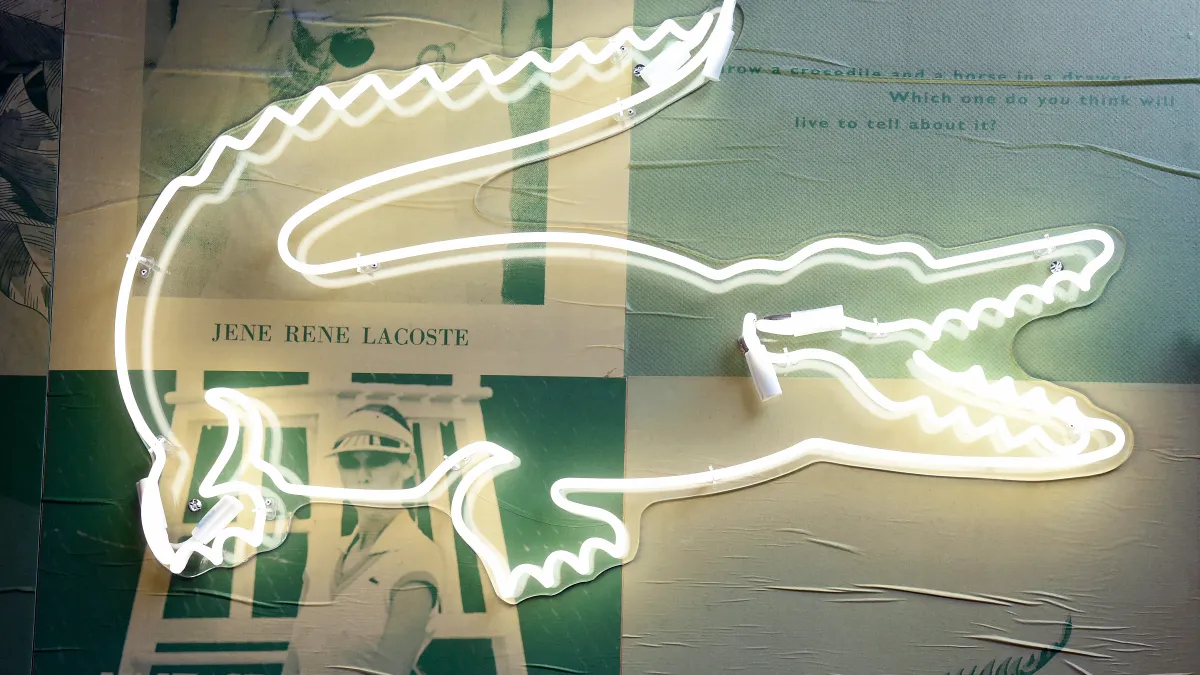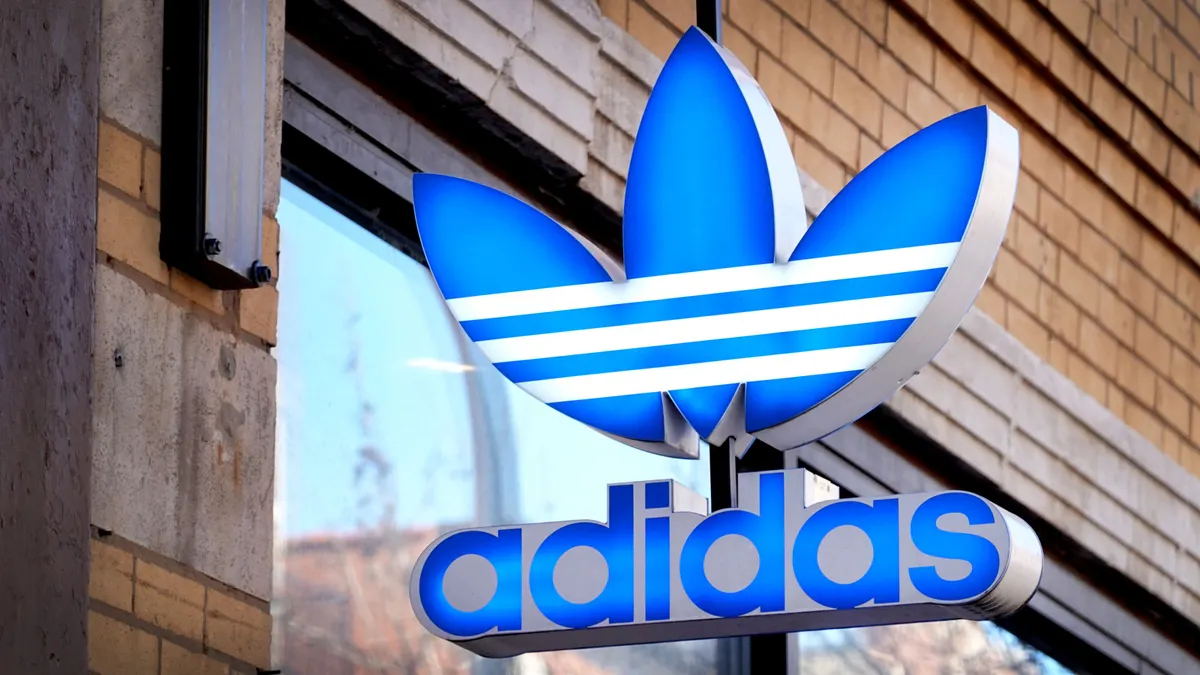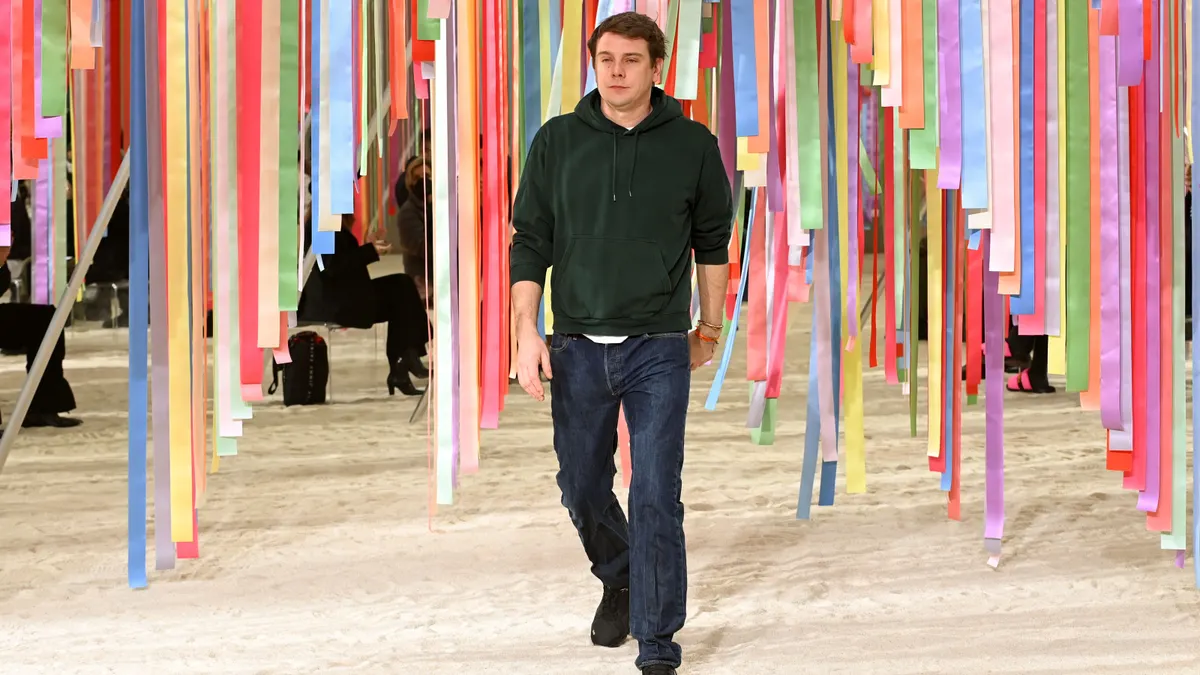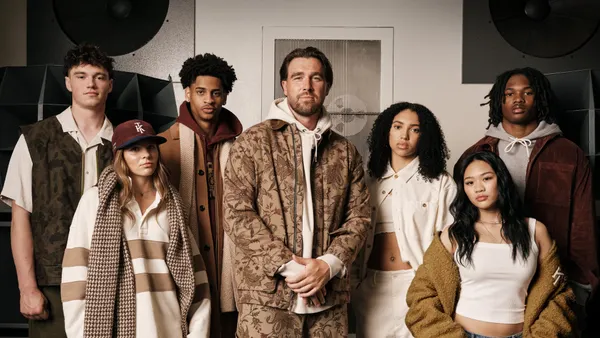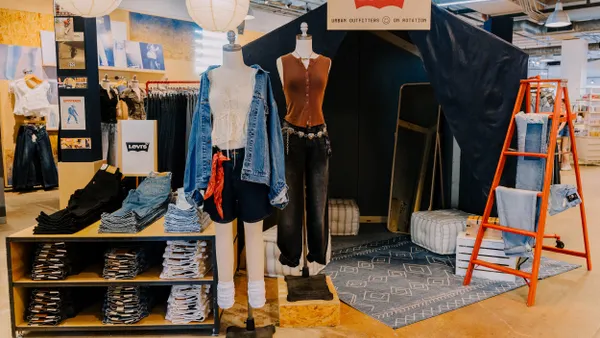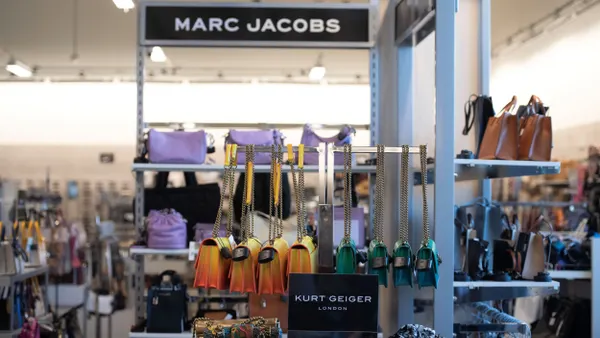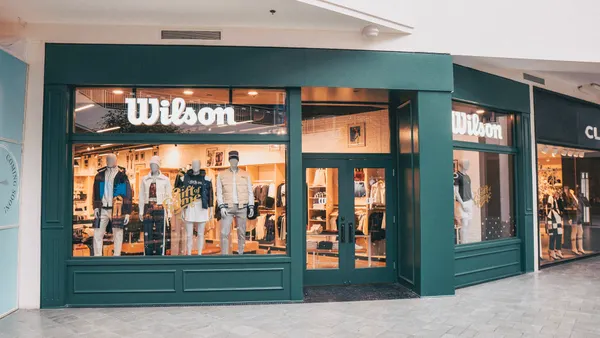Dive Brief:
- Lacoste and Sporty & Rich are collaborating on a new 22-piece collection of apparel and accessories, available in Lacoste stores and online beginning Wednesday.
- The line was co-created by Louise Trotter, the British former creative director of Lacoste, and Emily Oberg, founder of the Los Angeles-based Sporty & Rich line. It features updated preppy basics based on pieces from the Lacoste archives of the 1970s and 1980s, according to WWD.
- Trotter, who left Lacoste in January after four years with the Maus Frères-owned brand, is now the creative director of French fashion house Carven, which she joined two months after leaving Lacoste.
Dive Insight:
The new collection, which ranges in price from $20 to $210, will feature casual tennis-inspired styles including tracksuits, pleated skirts, jumpsuits and polo shirts, and play into the quiet luxury tennis aesthetic that became popular last year.
Oberg told WWD that she and Trotter dug into vintage Lacoste styles to create the aesthetic. “Our brand is very much a vintage-inspired brand, so [Trotter] sent me a ton of photos of their archive from the ‘70s and ‘80s and then we just chose our favorites and worked off of that,” she said.
Sporty & Rich, which began in 2015 as an Instagram mood board, and later a magazine and apparel collection, leans into its tennis and athletic roots and has released several previous collaborations inspired by that ethos, including a long-standing collaboration with tennis brand Prince and two collaborations with Adidas.
Meanwhile, Lacoste has been working on its own collaborations. Last month it debuted a new collection with streaming service Netflix, featuring polos, tracksuits and sweatshirts inspired by some of its more popular shows on the platform, and building on its already successful product placement work there.
Lacoste is owned by Maus Frères SA, which bought the brand in 2012. The family-run Swiss holding company also owns Gant and the Kooples, and Chief Executive Thierry Guibert told the WSJ earlier this year he was looking to duplicate the success of Lacoste by acquiring other upmarket brands.



